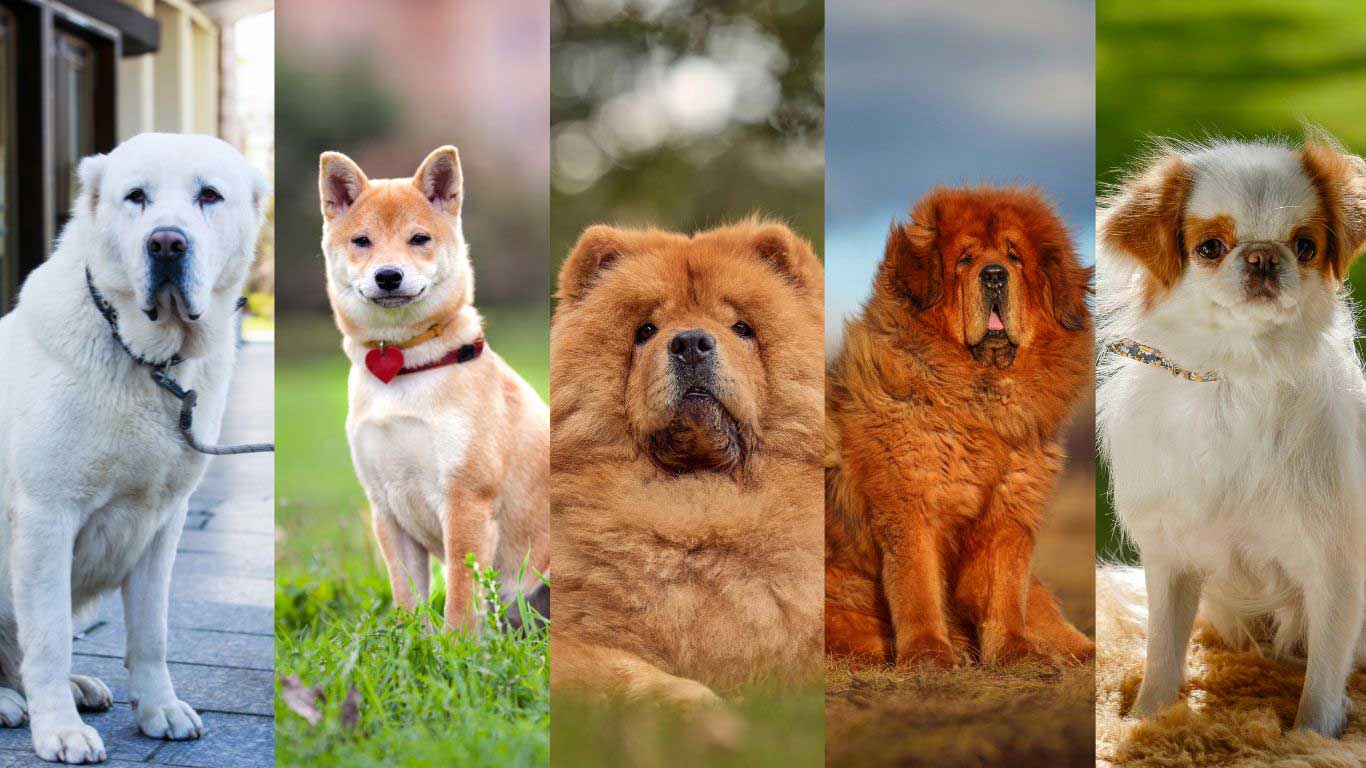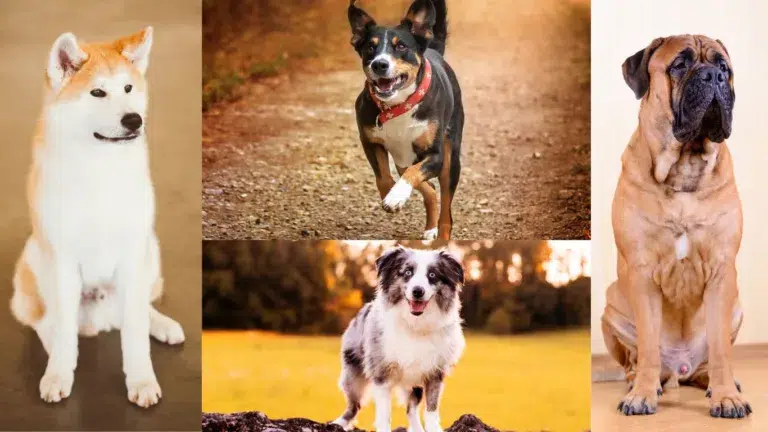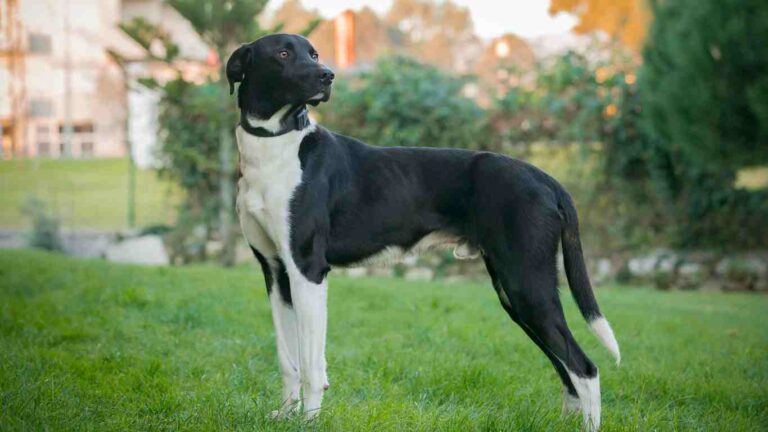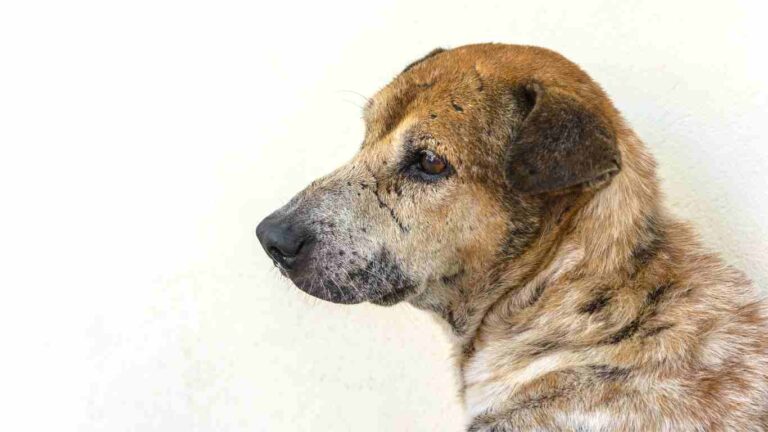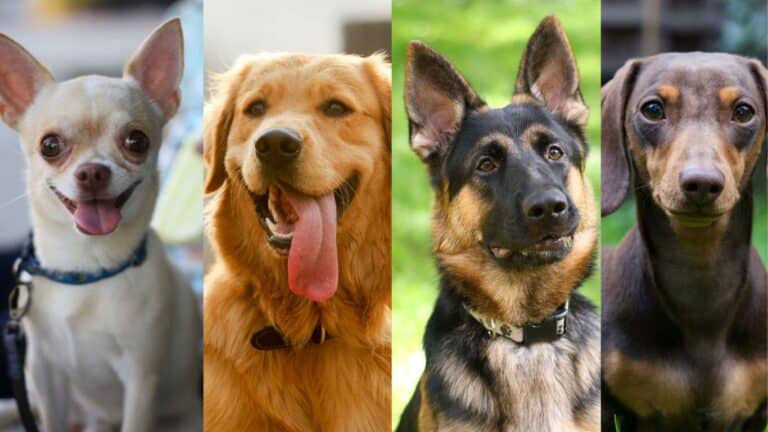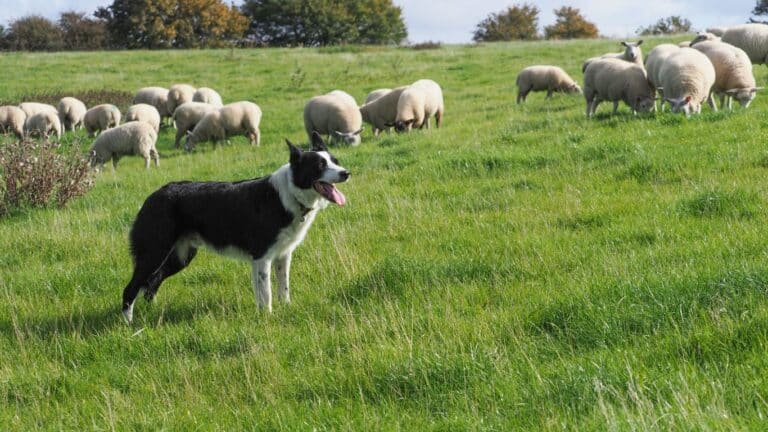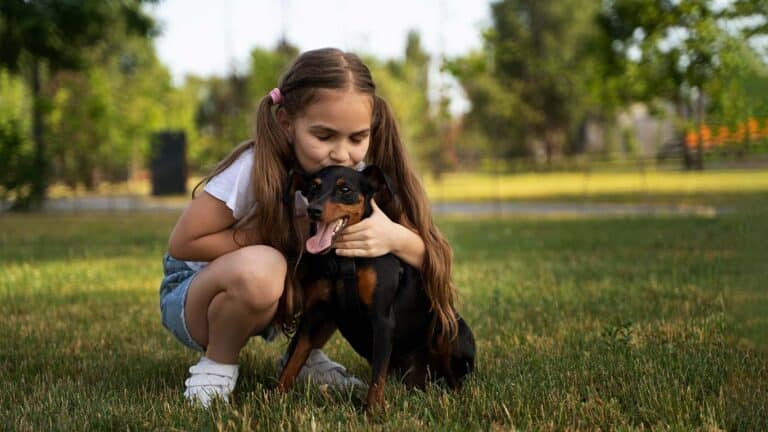Asian dog breeds have a rich history and are beloved companions for many people. They have been our boon companions for thousands of years, with evidence suggesting their domestication in Asia around 33,000 years ago. There are three major lineages of Asian dogs, including the Western Eurasian lineage, the East Asian lineage, and the Arctic lineage. Many popular breeds today, such as the Chow Chow, Shiba Inu, and Tibetan Mastiff, can trace their origins back at least 1,000 years. European dog breeds, on the other hand, are more genetically related to each other than they are to Asian dogs.
Pawspective Highlights:
Central Asian Shepherd
The Central Asian Shepherd, also known as the Central Asian Alabai, is a remarkable ancient Asian dog breed that has captured the hearts of many dog enthusiasts. Believed to have originated in modern-day Kazakhstan, Afghanistan, Iran, and Tajikistan, these majestic canines have evolved independently for over 5,000 years.
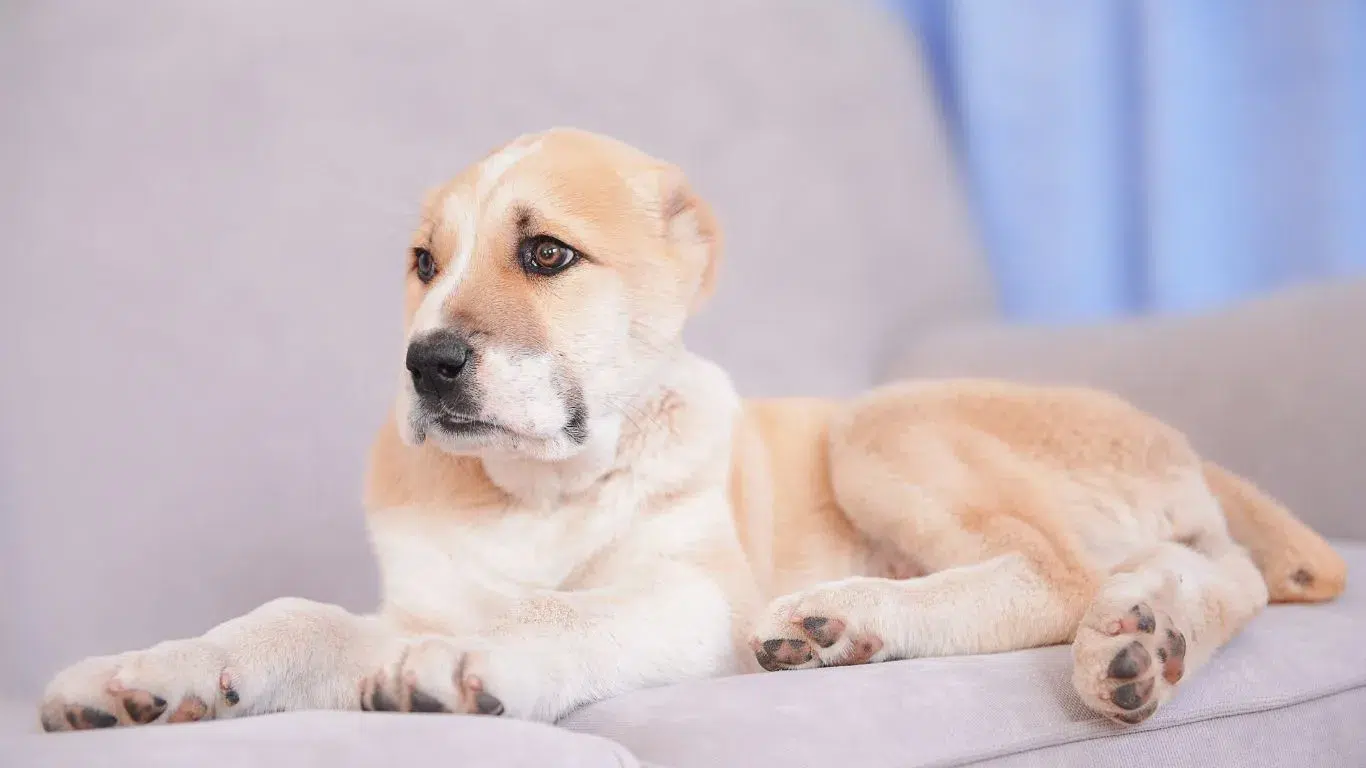
Renowned for their dedication and loyalty, Central Asian Shepherds have long served as exceptional guardians of livestock. These large and powerful dogs have a calm and composed demeanor, making them reliable protectors of their flocks. Despite their imposing stature, they possess a gentle and faithful nature towards their human companions.
When properly socialized from an early age and given positive reinforcement training, Central Asian Shepherds can adapt well to family life. Their intelligence and innate sense of responsibility make them excellent companions who can provide security and love to their household.
With their rich history and unwavering loyalty, Central Asian Shepherds continue to be treasured as invaluable members of families around the world.
“The Central Asian Shepherd embodies the ancient Asian dog breeds, showcasing their remarkable strength, loyalty, and protective nature.”
| Traits | Characteristics |
|---|---|
| Size | Large |
| Temperament | Faithful, calm, loyal |
| Origin | Kazakhstan, Afghanistan, Iran, Tajikistan |
| History | Evolved for over 5,000 years |
| Role | Diligent flock guardian |
Shiba Inu
The Shiba Inu is a small but beloved Japanese dog breed that originated around 300 BC. They are considered one of the six indigenous dogs of Japan, known as Nihon Ken, which are considered national natural monuments. Shiba Inus are bright and slightly mischievous, with a strong instinct to hunt.
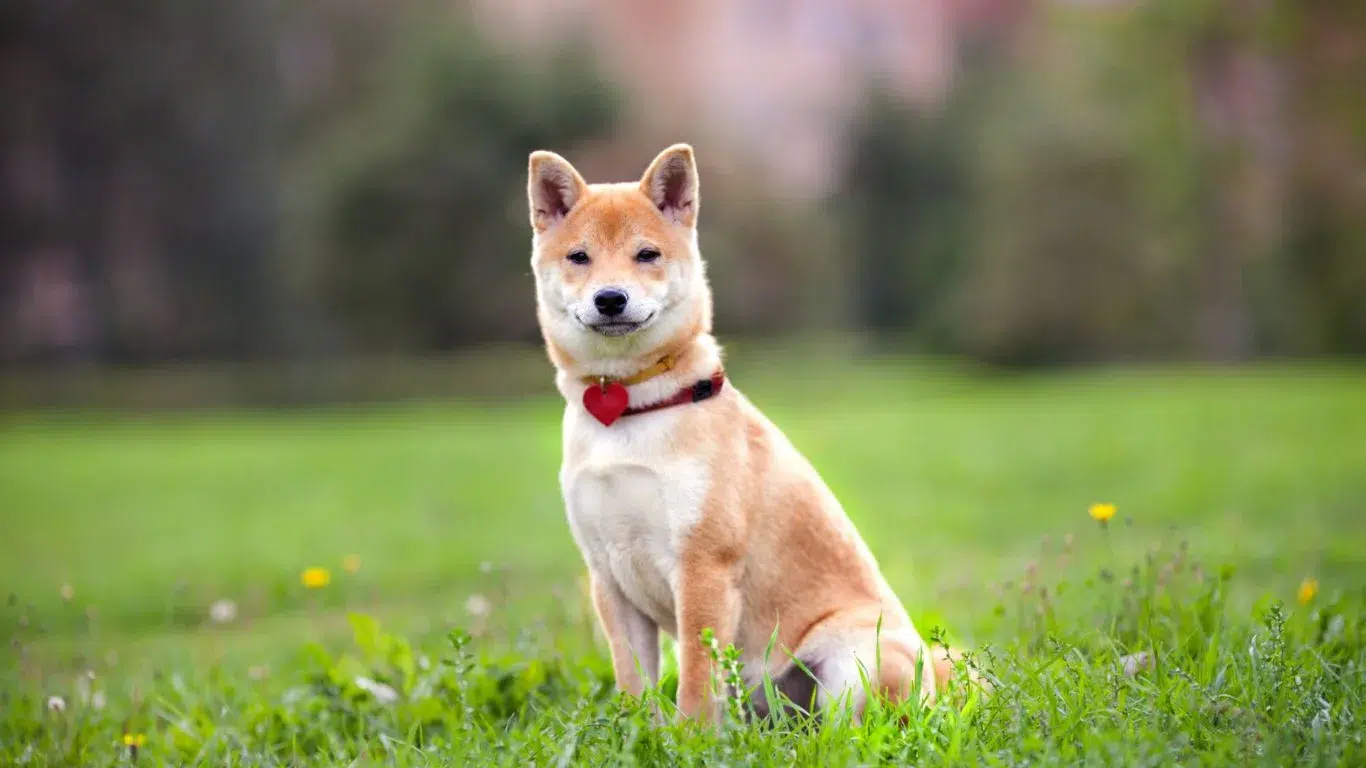
Shiba Inus require proper training, a quality leash, and secure fencing to ensure their safety. Their independent nature can sometimes make training a bit challenging, but with the right approach, they can become well-behaved and obedient pets. As a Japanese dog breed, they have gained popularity worldwide for their unique personality and adorable appearance.
Shiba Inus are known for their spirited personality and loyalty to their families. They have a strong bond with their human companions and can be protective of them. Despite their independent nature, they can be affectionate and playful with proper socialization and training.
With their compact size and moderate exercise needs, Shiba Inus are suitable for both apartment living and houses with a fenced yard. They thrive in environments that provide mental and physical stimulation. Regular walks, play sessions, and interactive toys will help satisfy their high energy levels and prevent boredom.
Characteristics of Shiba Inu:
- Size: Small
- Weight: 17-23 pounds (7.7-10.4 kilograms)
- Height: 13.5-16.5 inches (34-42 centimeters)
- Coat: Double coat, plush and fluffy
- Colors: Red, sesame, black and tan, cream
- Temperament: Spirited, alert, bold, independent
Despite their small size, Shiba Inus have a strong presence and are known for their expressive faces and curled tails. They can be wary of strangers but are generally friendly when properly introduced. Their unique combination of intelligence, independence, and loyalty makes them a favorite choice among dog enthusiasts.
Famous Shiba Inu:
| Name | Claim to Fame |
|---|---|
| Hachiko | Famous for his unwavering loyalty, waiting for his deceased owner at a train station every day for nearly 10 years. |
| Maru | Became an internet sensation with his adorable videos showcasing his playful antics. |
| ShibSibs | A pair of Shiba Inu siblings who gained a large following on social media for their cute and entertaining pictures. |
If you’re looking for a dog that combines the spirit of a wild hunter with the loyalty of a devoted companion, the Shiba Inu might be the perfect choice for you. Just remember to provide them with the mental and physical stimulation they need, and you’ll have a happy and contented Shiba Inu by your side.
Chow Chow
The Chow Chow is an ancient Asian dog breed with a distinct appearance resembling a spitz-like creature. Believed to have originated during the Han Dynasty in China around 206 BC, it is a breed steeped in history. Artifacts from that era depict the Chow Chow, further emphasizing its esteemed status. Referred to as “puffy-lion dogs” or “songshi quan” in Chinese, they were cherished by nobles and served as guards and hunting companions.
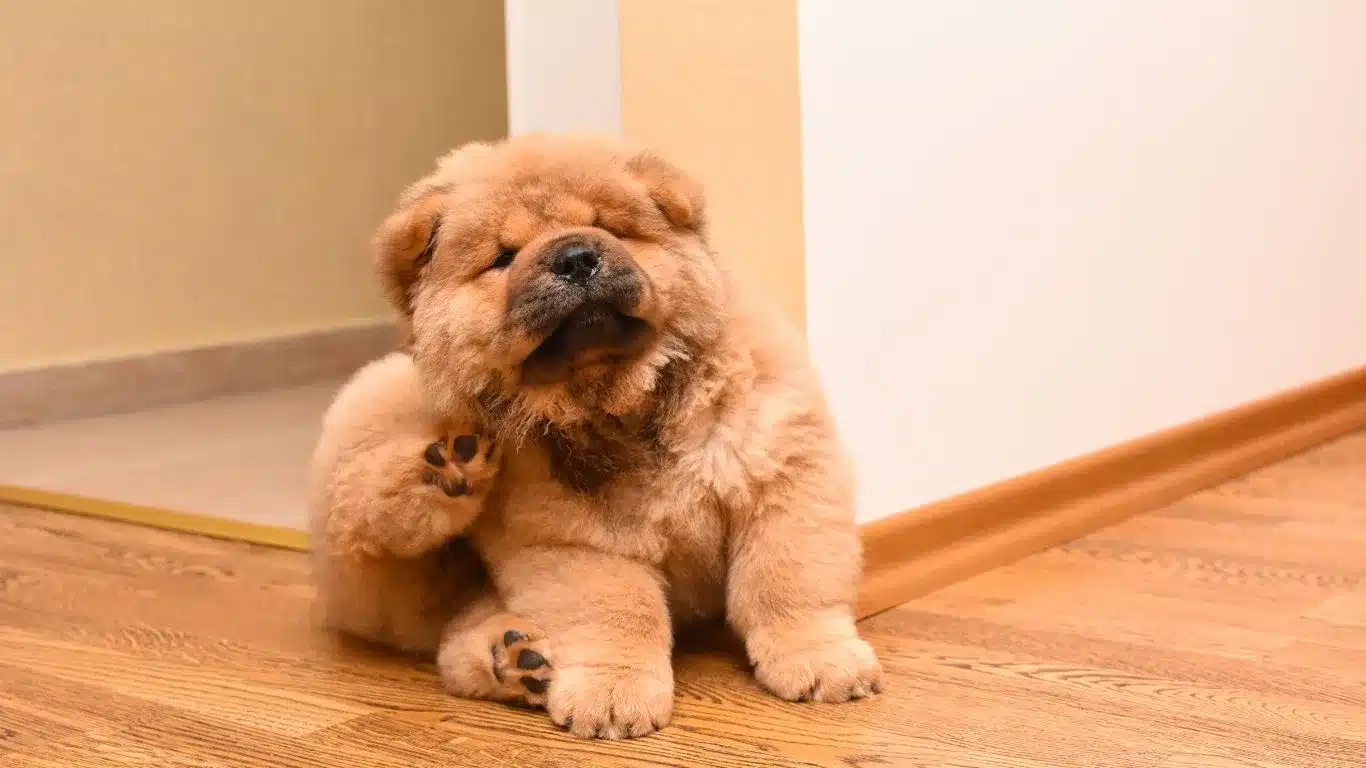
Chow Chows have a unique double coat, consisting of a dense, soft undercoat and a rough, straight outer coat that gives them a fluffy appearance. They come in various colors, including cream, red, black, and blue. Their distinctive blue-black tongue is another notable feature.
Known for their protective nature and loyalty, Chow Chows are devoted to their owners, making them excellent family pets. However, they are typically reserved and aloof with strangers, requiring early socialization to ensure they develop into well-rounded dogs.
In spite of their independent disposition, Chow Chows can be affectionate and engaging with their family members. Their dignified demeanor, paired with a fierce loyalty, makes them steadfast companions. While they may not be the most outwardly affectionate dogs, their love and devotion to their owners run deep.
Proper training and socialization from an early age are crucial for Chow Chows. Positive reinforcement techniques work well with this intelligent and independent breed. Early and consistent training will help them become well-mannered and obedient dogs.
Chow Chows require regular grooming to maintain the health and appearance of their lush, thick coat. Regular brushing and occasional bathing are necessary to keep their coat in good condition. Additionally, their deep-set, almond-shaped eyes need regular care and attention to prevent any eye-related issues.
The distinctive appearance and regal demeanor of the Chow Chow make it a fascinating and prized breed among dog lovers. With their rich history, loyal nature, and striking spitz-like appearance, they continue to captivate enthusiasts worldwide.
Tibetan Mastiff
The Tibetan Mastiff is one of the largest Asian dog breeds, known for its impressive size and majestic appearance. With a rich history dating back to ancient times, these guardian dogs have been revered for centuries. Marco Polo, the famous explorer, described them as “tall as a donkey with a voice like a lion.”
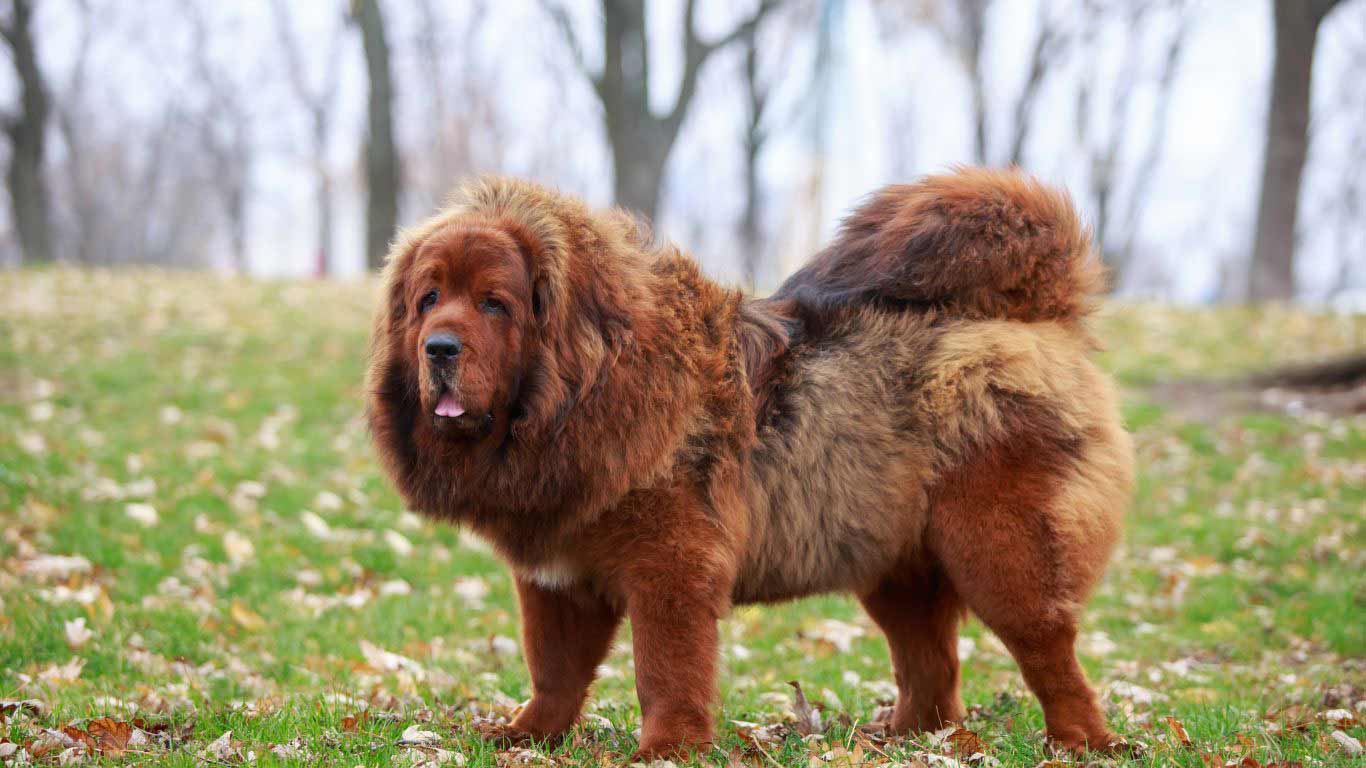
Tibetan Mastiffs were originally bred in Tibet to protect livestock and homes from predators. They are intelligent, strong-willed, and fiercely devoted to their families. Their imposing presence and natural protective instincts make them excellent guard dogs. Owning a Tibetan Mastiff is considered a symbol of social status in China.
The Key Traits of Tibetan Mastiffs:
- Large size, often weighing between 70 to 150 pounds
- Majestic and dignified appearance
- Strong protective instinct
- Devoted and loyal to their families
- Independent and strong-willed
Tibetan Mastiffs were originally bred in Tibet to protect livestock and homes from predators. They are intelligent, strong-willed, and fiercely devoted to their families. Their imposing presence and natural protective instincts make them excellent guard dogs. Owning a Tibetan Mastiff is considered a symbol of social status in China.
Tibetan Mastiff Care Tips:
| Aspect | Recommendation |
|---|---|
| Exercise | Tibetan Mastiffs require daily exercise to keep them physically and mentally stimulated. Regular walks and playtime should be part of their routine. |
| Grooming | These dogs have a thick, double coat that requires regular brushing to prevent matting and keep their fur healthy. They shed heavily twice a year. |
| Socialization | Early and ongoing socialization is essential to ensure that Tibetan Mastiffs develop into well-rounded dogs. Exposing them to various situations, people, and animals from a young age will help prevent them from becoming overly protective or aggressive. |
| Training | Tibetan Mastiffs are intelligent but can be stubborn, so consistent and patient training is necessary. Positive reinforcement techniques work best with these strong-willed dogs. |
Japanese Chin
The Japanese Chin, also known as the Japanese Spaniel, is a dog breed with a distinct appearance. While their origins are not completely known, they are believed to have originated in Korea or the Chinese imperial court. These small and charming dogs have been valued by Japanese aristocracy and were often presented as gifts to foreign officials. They have a broad head, a flattened face, and a fluffy tail, and are known for their friendly demeanor.
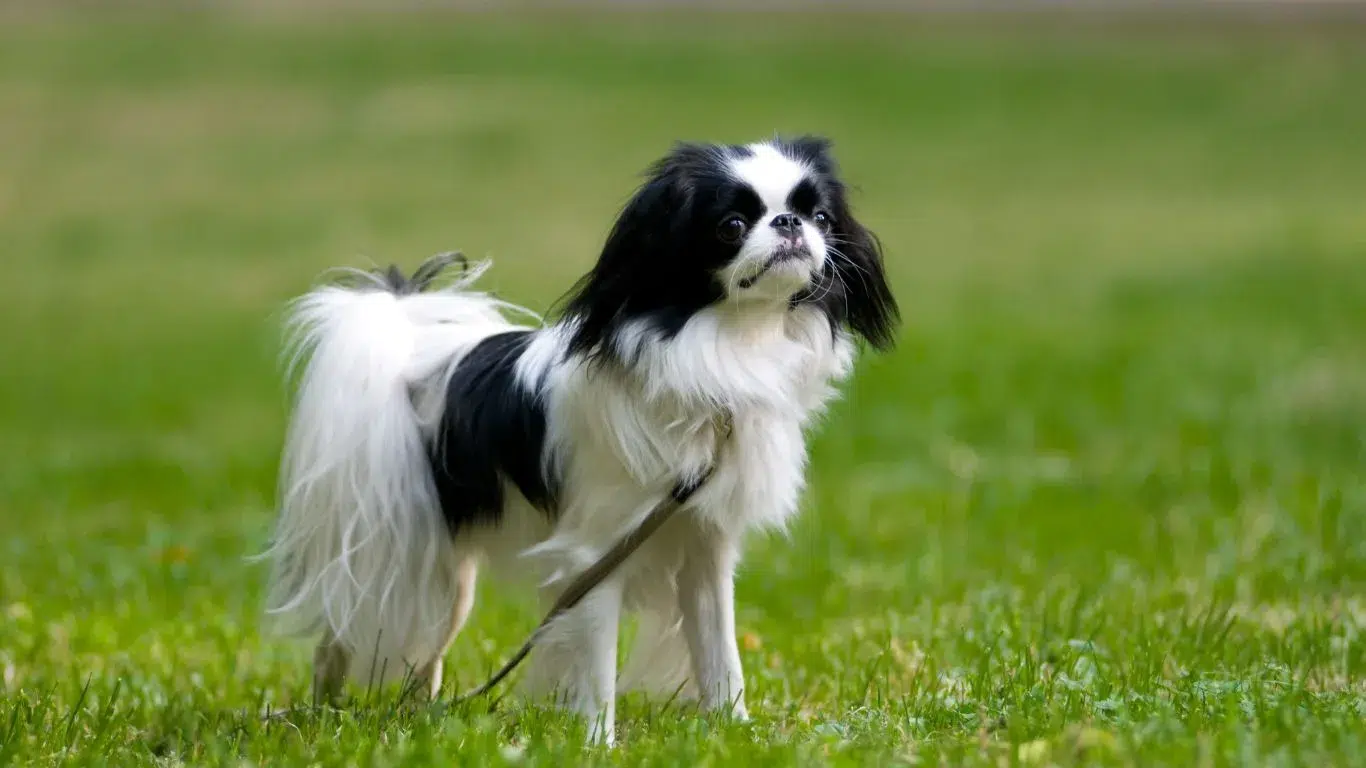
Despite their small size, Japanese Chins are known for their big personalities. They are sociable and love to be the center of attention. Their charming nature and affectionate disposition make them wonderful companions for individuals or families.
The Japanese Chin’s distinct appearance adds to their appeal. Their broad head and large, wide-set eyes give them a sweet and alert expression. Their short muzzle and flat face are characteristic features of the breed. Additionally, their fluffy tail, carried high over their back, adds to their overall elegance.
If you are considering adding a Japanese Chin to your family, it’s important to note that they are relatively low-maintenance dogs. They have a single-layered coat that requires regular brushing to prevent matting. Additionally, Japanese Chins are generally healthy dogs with few breed-specific health concerns, making them a great choice for those looking for a long-term companion.
In brief Table: Japanese Chin
| Traits | Description |
|---|---|
| Size | Small |
| Temperament | Friendly, sociable, affectionate |
| Appearance | Broad head, large wide-set eyes, short muzzle, flat face, fluffy tail |
| Care | Regular brushing to prevent matting, generally healthy breed |
Japanese Spitz
The Japanese Spitz is a small and fluffy dog breed that resembles the American Eskimo and Samoyed. With their distinctive wedge-shaped snout, alert ears, and fluffy coat, Japanese Spitz dogs have a charming and elegant appearance.
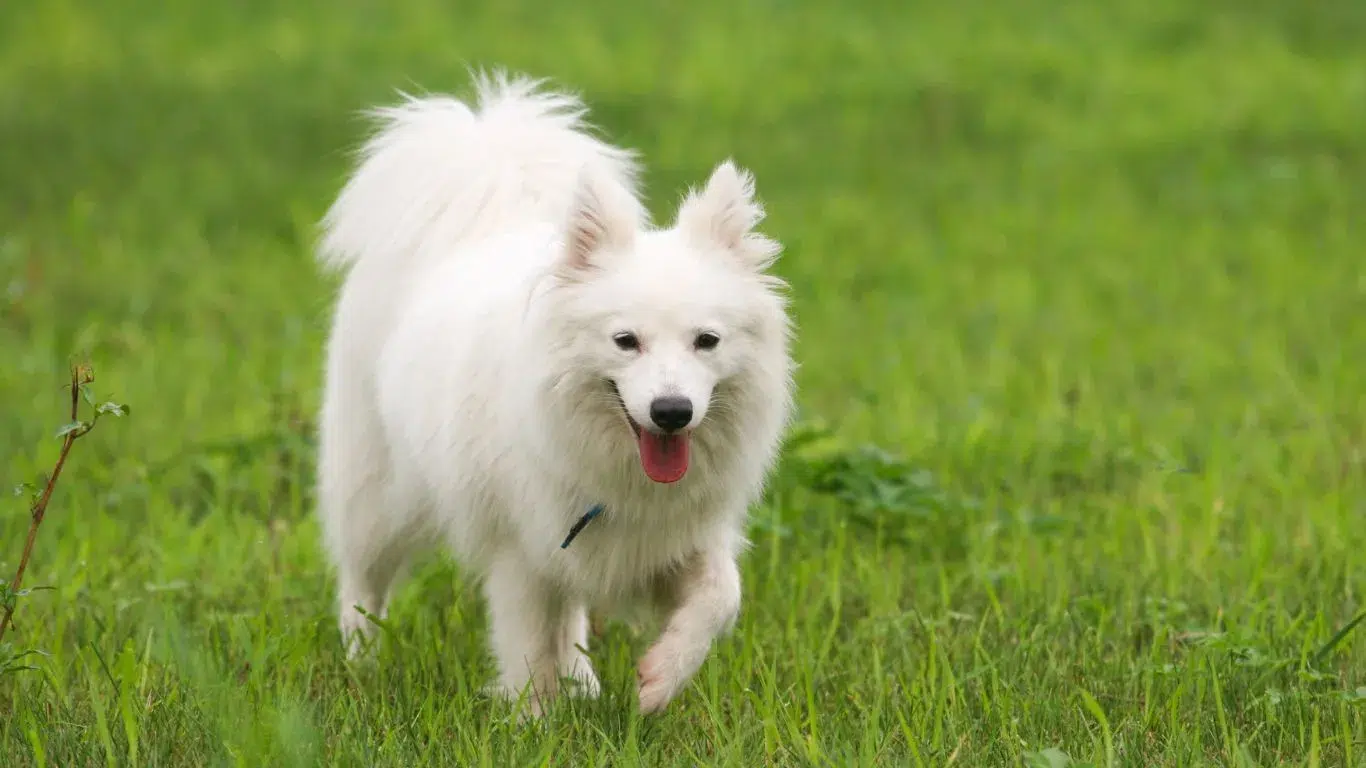
Japanese Spitz dogs are known for their cleverness and friendly nature, making them excellent family companions. They are also highly adaptable and easy to train, which makes them suitable for both experienced and first-time dog owners.
This breed requires minimal grooming, with occasional brushing to maintain their beautiful white coat. Their size and adaptability make them a popular choice for small homes or apartments. Japanese Spitz dogs have a natural protective instinct and can be an alert watchdog when needed.
If you’re looking for a small Asian dog breed that is friendly, clever, and easy to train, the Japanese Spitz might be the perfect match for you and your family.
Akita
The Akita is one of Japan’s most famous and beloved dog breeds. Known for their loyalty and devotion, Akitas have captured the hearts of people worldwide. This Japanese dog breed has a strong-willed personality and makes an excellent guard dog, always ready to protect their family.
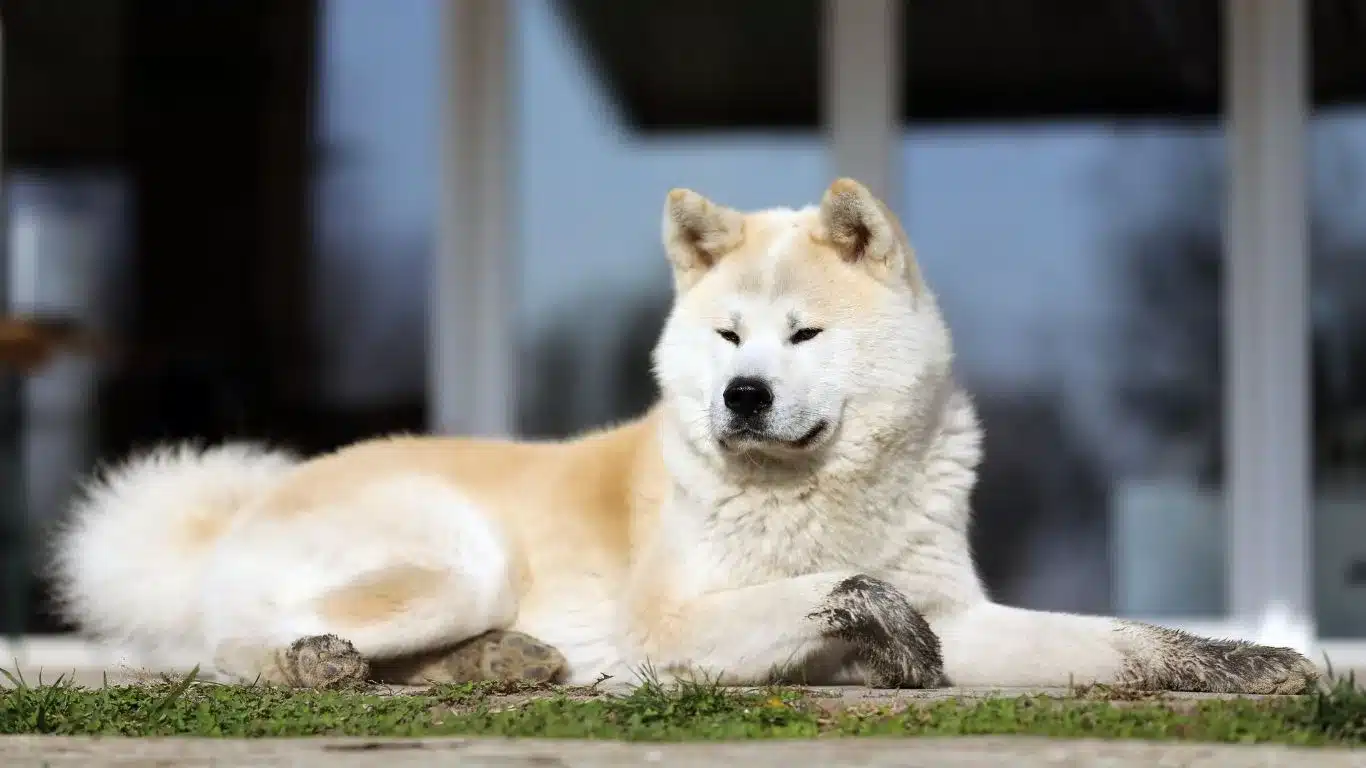
With their cautious nature, Akitas are wary of strangers but can form deep bonds with their loved ones, including children. Their large and dignified presence, weighing up to 130 pounds, adds to their imposing aura.
Originally bred for hunting and fighting, Akitas were once exclusively owned by the Imperial family in Japan. Today, their popularity transcends borders, making them treasured pets in many households.
“Akita’s strong personality and loyalty are legendary. They exemplify the true meaning of devotion and are a symbol of Japanese heritage.”
To truly appreciate the Akita breed, one must delve into the story of Hachiko. This famous Akita dog demonstrated unwavering loyalty, waiting at Shibuya Station for his deceased owner every day for nearly ten years. Hachiko’s story touched the hearts of many and solidified the Akita’s reputation as a steadfast companion.
Did You Know?
Akita’s strong-willed nature requires consistent training and socialization to ensure a well-behaved pet.
Shar-Pei
The Shar-Pei is a unique Chinese dog breed known for its distinctive appearance, characterized by wrinkled skin. With a history dating back to ancient China, the Shar-Pei was highly valued for its loyalty and protective nature. These intelligent and independent dogs make excellent guard dogs, always ready to keep a watchful eye over their loved ones.
While Shar-Peis may be reserved with strangers, they are loving and playful with their owners. Their wrinkled skin adds to their charm, giving them a truly distinct look. However, it’s important to note that proper training and socialization are crucial for Shar-Peis to ensure good behavior.
Indian Spitz
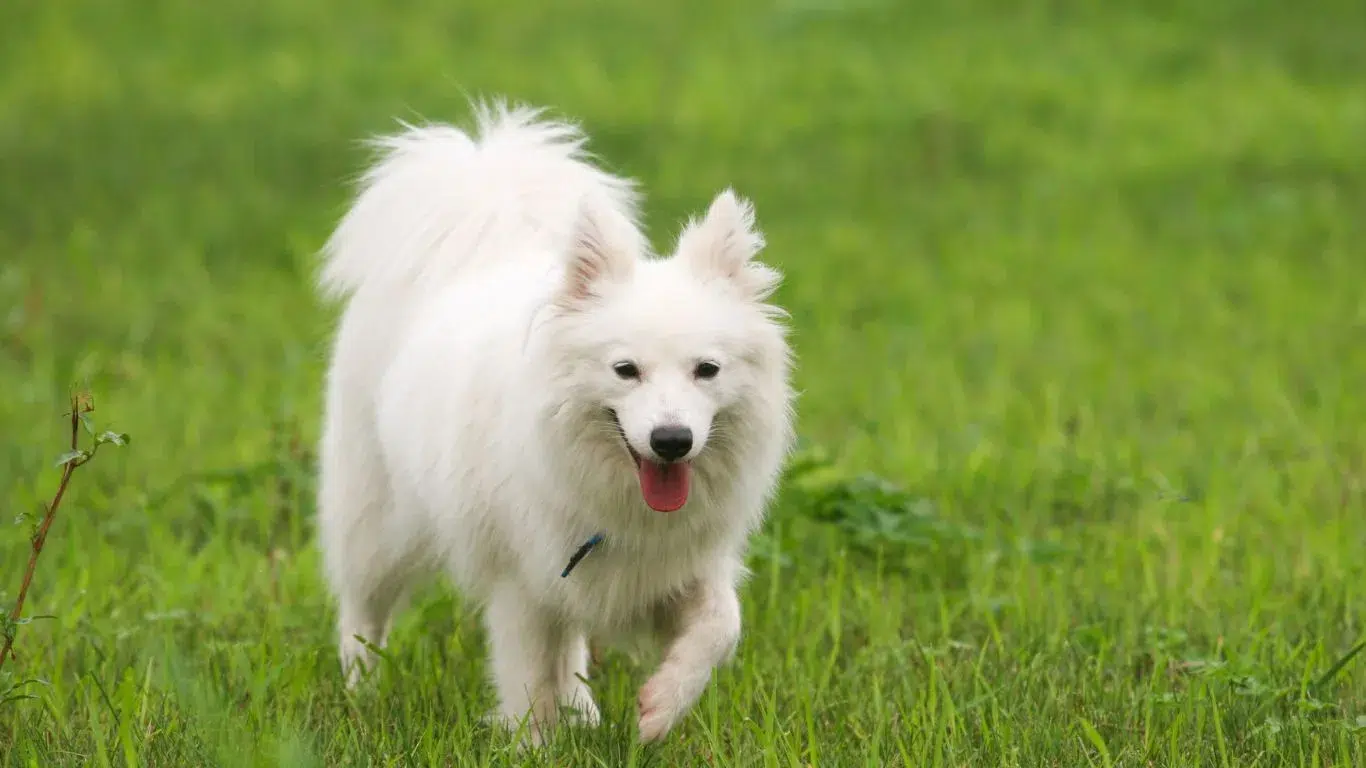
The Indian Spitz is a small and friendly dog breed that is popular in India. They resemble German Spitzes and have adapted well to the Indian climate. Indian Spitz dogs were once pets of Chinese nobles but were brought to Japan to serve as companions to Japanese dignitaries. They are known for their snuggly nature and get along well with children and other pets. Indian Spitz dogs are intelligent and easy to groom, making them a low-maintenance choice for families.
Join the Pet Planet Diaries
Sign up for our newsletter to get the latest tips, stories, and exclusive insights into the wonderful world of pets.
Final Remarks
Asian dog breeds boast a rich history and distinctive traits that make them cherished companions. From the ancient Central Asian Shepherd to the beloved Shiba Inu and Akita, these breeds offer a wide variety of personalities, sizes, and appearances. They have deep cultural significance, reflecting different aspects of Asian heritage. Whether you seek a loyal guardian, a playful family pet, or a smaller companion, there is an Asian dog breed that can suit your lifestyle and preferences. It is crucial to consider the breed’s history, temperament, and care requirements before making a choice.
Central Asian Shepherds are diligent flock guardians with a calm and faithful nature. Shiba Inus, on the other hand, are bright and slightly mischievous Japanese dogs known for their hunting instincts. Chow Chows, with their distinctive spitz-like appearance, are ancient Chinese breeds cherished for their protective nature. The majestic Tibetan Mastiff, with its impressive size, serves as a guardian dog and a status symbol in China. Japanese Chins, Japanese Spitzes, Akitas, Shar-Peis, and Indian Spitzes are other examples of Asian dog breeds, each with its unique characteristics.
As you explore the world of Asian dog breeds, you will discover their fascinating histories, diverse personalities, and loyal companionship. Whether you are attracted to the ancient traditions and nobility of the Central Asian Shepherd or the mischievous intelligence of the Shiba Inu, these breeds offer a glimpse into the rich tapestry of Asian culture. Each breed offers its own set of advantages and considerations, so take the time to research and understand their needs and characteristics. By choosing an Asian dog breed, you are not only welcoming a loving companion into your home but also connecting to a heritage that spans millennia.
FAQ
Are Asian dog breeds popular?
Yes, Asian dog breeds have a rich history and are beloved companions for many people.
How long have Asian dog breeds been domesticated?
Evidence suggests their domestication in Asia around 33,000 years ago.
How many major lineages of Asian dogs are there?
There are three major lineages of Asian dogs, including the Western Eurasian lineage, the East Asian lineage, and the Arctic lineage.
What are some popular Asian dog breeds?
Many popular breeds today, such as the Chow Chow, Shiba Inu, and Tibetan Mastiff, can trace their origins back at least 1,000 years.
Where did the Central Asian Shepherd originate?
The Central Asian Shepherd is believed to have originated in modern-day Kazakhstan, Afghanistan, Iran, and Tajikistan.
What are the characteristics of the Central Asian Shepherd?
They are large and powerful dogs known for their calm and faithful nature.
When did the Shiba Inu originate?
The Shiba Inu originated around 300 BC and is considered one of the six indigenous dogs of Japan.
What is the temperament of the Shiba Inu?
Shiba Inus are bright, slightly mischievous, and have a strong instinct to hunt.
Where did the Chow Chow originate?
The Chow Chow is believed to have originated in China during the Han Dynasty around 206 BC.
What are the characteristics of the Chow Chow?
Chow Chows are known for their protective nature and loyalty to their owners.
What is the history of the Tibetan Mastiff?
The Tibetan Mastiff has a rich history dating back to ancient times and was originally bred as guardian dogs in Tibet.
What is the temperament of the Tibetan Mastiff?
Tibetan Mastiffs are brilliant, strong-willed, and devoted to their families.
Where did the Japanese Chin originate?
The origins of the Japanese Chin are not completely known but are believed to be Korea or the Chinese imperial court.
What are the characteristics of the Japanese Chin?
They have a distinct appearance with a broad head, flattened face, and a fluffy tail.
What are the characteristics of the Japanese Spitz?
Japanese Spitz dogs are small, fluffy, clever, and have minimal grooming requirements.
What is the history of the Akita?
Akitas are one of Japan’s most famous and beloved dog breeds and were once exclusive to the Imperial family in Japan.
What is the temperament of the Akita?
Akitas have a strong personality, make excellent guard dogs, and can get along well with children.
What are the characteristics of the Shar-Pei?
Shar-Peis are a unique Chinese dog breed known for their wrinkled skin and distinctive appearance. They are loyal, protective, and intelligent.
What is the temperament of the Indian Spitz?
Indian Spitz dogs are small, friendly, snuggly, and get along well with children and other pets.
What are the care requirements of Asian dog breeds?
Each breed may have specific care requirements, including training, grooming, and socialization. It’s important to consider these factors before making a decision.
With a passion for canine companionship and a wealth of experience spanning 15 years, Dan Schroeder stands as a distinguished authority in the realm of dog health, training, and beyond.
From an early age, Dan found solace and joy in the company of four-legged friends, sparking a lifelong dedication to understanding and enhancing the lives of dogs. His journey into the world of canine expertise began over a decade and a half ago, marked by a relentless pursuit of knowledge in the fields of dog health, behavior, and training.

